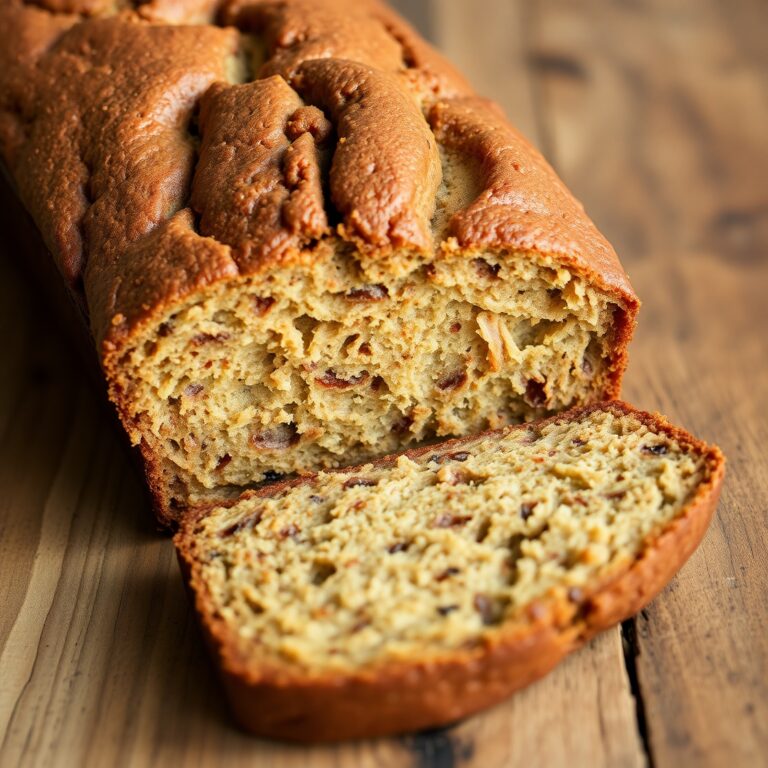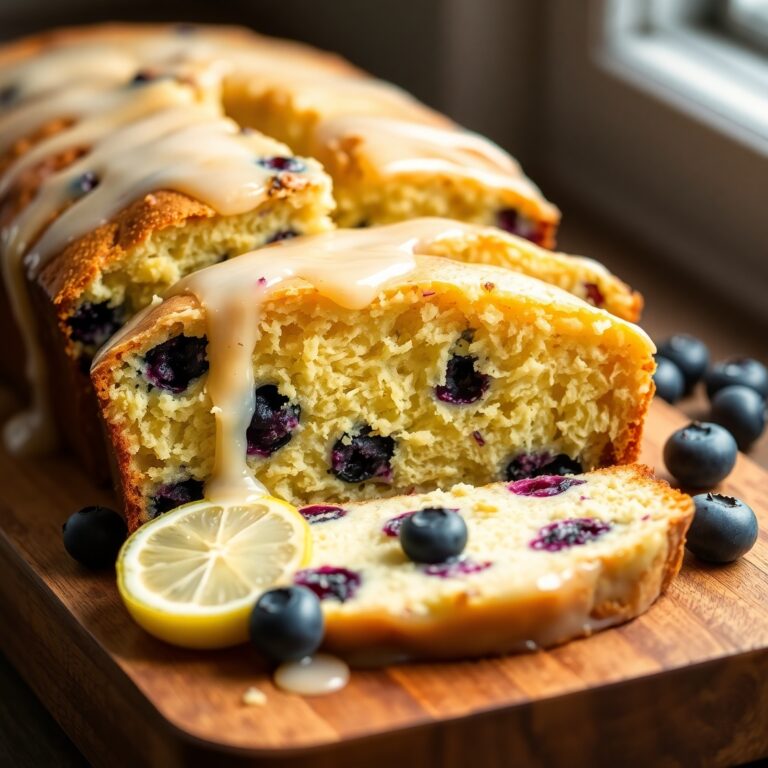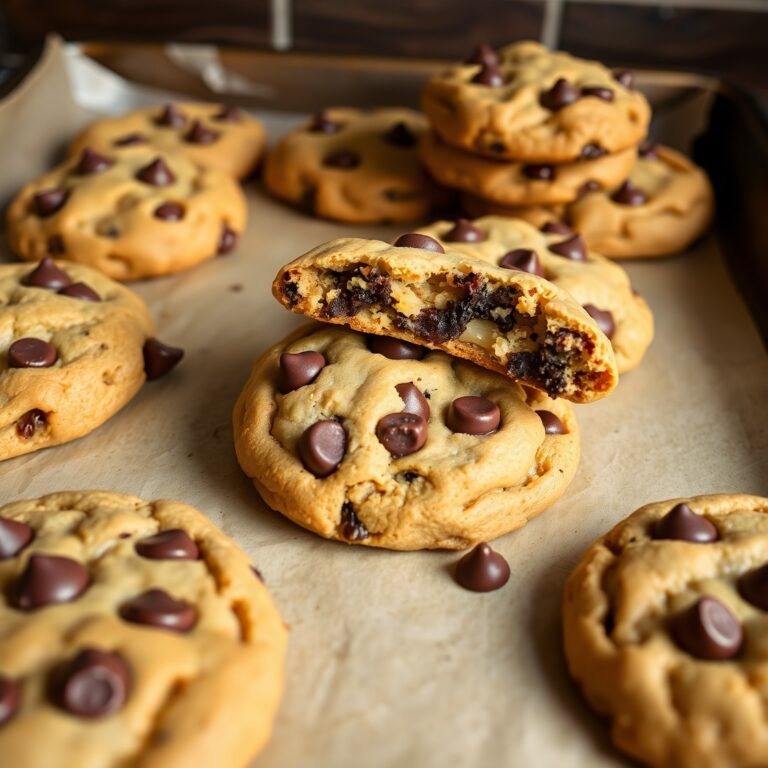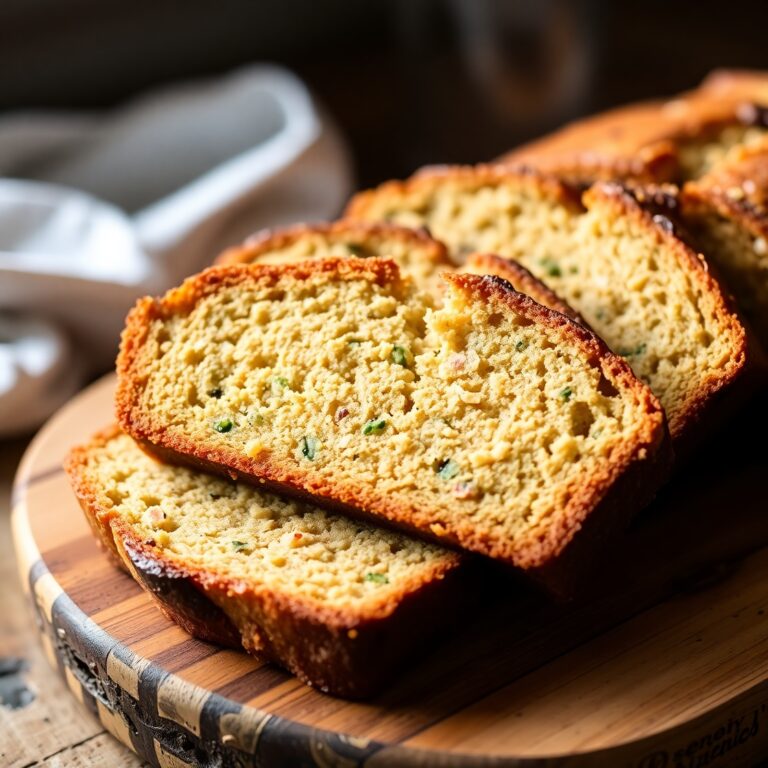Sweet bread has always held a special place in kitchens around the world. Whether it’s the soft, fluffy pull-apart loaves or the richly flavored, slightly sweetened buns, sweet bread brings warmth and comfort to any table. I first made this sweet bread recipe during a chilly autumn weekend when I wanted something that smelled like home and tasted like a gentle hug. It was a spontaneous creation inspired by family traditions and a longing for a versatile bread that works for breakfast, snacks, or even a simple dessert.
The beauty of sweet bread lies in its simplicity and adaptability. It can be paired with butter, jam, or honey, and even transformed with spices or dried fruits. This recipe is designed to be straightforward enough for beginners yet satisfying for those who want to perfect the art of baking sweet bread. If you’re curious about making your own soft, fragrant loaf that fills your kitchen with irresistible aroma, keep reading — you won’t regret it.
Why I Love This Recipe?
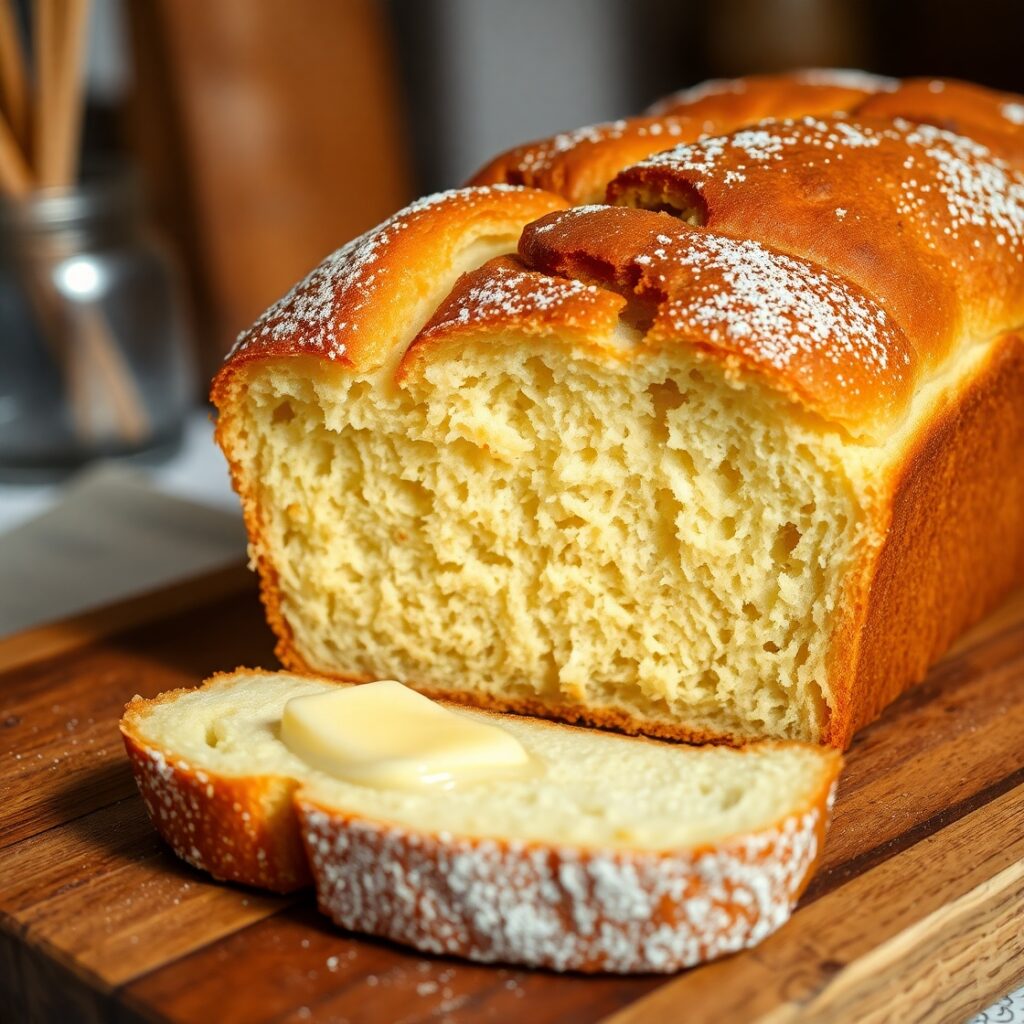
Sweet bread is a timeless classic that everyone should have in their baking repertoire. What makes this recipe special is its balance of a tender crumb with just the right hint of sweetness, without being overly sugary. Unlike heavy pastries, sweet bread is light and airy, with a melt-in-your-mouth texture that feels indulgent but not overwhelming.
The magic of this recipe is in its use of simple, pantry-friendly ingredients that come together to create something truly comforting. The slight sweetness enhances the natural flavor of the bread without overpowering it, making it perfect for both sweet and savory pairings.
I also appreciate the versatility. You can enjoy it plain with a pat of butter or dress it up with cinnamon sugar, raisins, or nuts. It’s a perfect weekend project because it doesn’t require complicated techniques but rewards you with an impressive homemade loaf. This recipe invites you to slow down, savor the baking process, and enjoy the results — soft, fragrant, and utterly delicious sweet bread.
Ingredients for Sweet Bread Recipes
For this sweet bread recipe, you’ll need basic baking ingredients that are easy to find but yield exceptional results when combined thoughtfully.
- All-purpose flour: The foundation of the bread, providing structure and texture.
- Sugar: Adds just the right amount of sweetness to brighten the bread without being cloying.
- Active dry yeast: Essential for that perfect rise and soft crumb.
- Warm milk: Moisturizes the dough and adds richness.
- Butter: Provides flavor and tenderness, helping create that soft texture.
- Eggs: Contribute to the bread’s richness and help with the structure.
- Salt: Balances the sweetness and enhances the overall flavor.
Optionally, you can add vanilla extract or a pinch of cinnamon for a subtle twist in aroma and taste.
The ingredient list may seem simple, but each plays a vital role in making the bread soft, fluffy, and flavorful. The warm milk activates the yeast gently, while the butter and eggs create a tender crumb that makes every slice feel luxurious.
How Much Time Will You Need?
Making sweet bread from scratch requires a bit of patience, mainly because the dough needs time to rise properly. Overall, you can expect to spend about 3 to 4 hours from start to finish.
Here’s the general breakdown:
- Preparing and mixing ingredients: 15-20 minutes
- First rise (proofing): 1 to 1.5 hours, until doubled in size
- Shaping the dough: 10-15 minutes
- Second rise: 45 minutes to 1 hour
- Baking: 25 to 30 minutes
- Cooling: 20-30 minutes before slicing
While the active preparation time is under half an hour, the rising times are crucial for developing the bread’s texture and flavor. This recipe works well if you plan ahead and let the dough rest properly.
How to Make This Sweet Bread Recipes
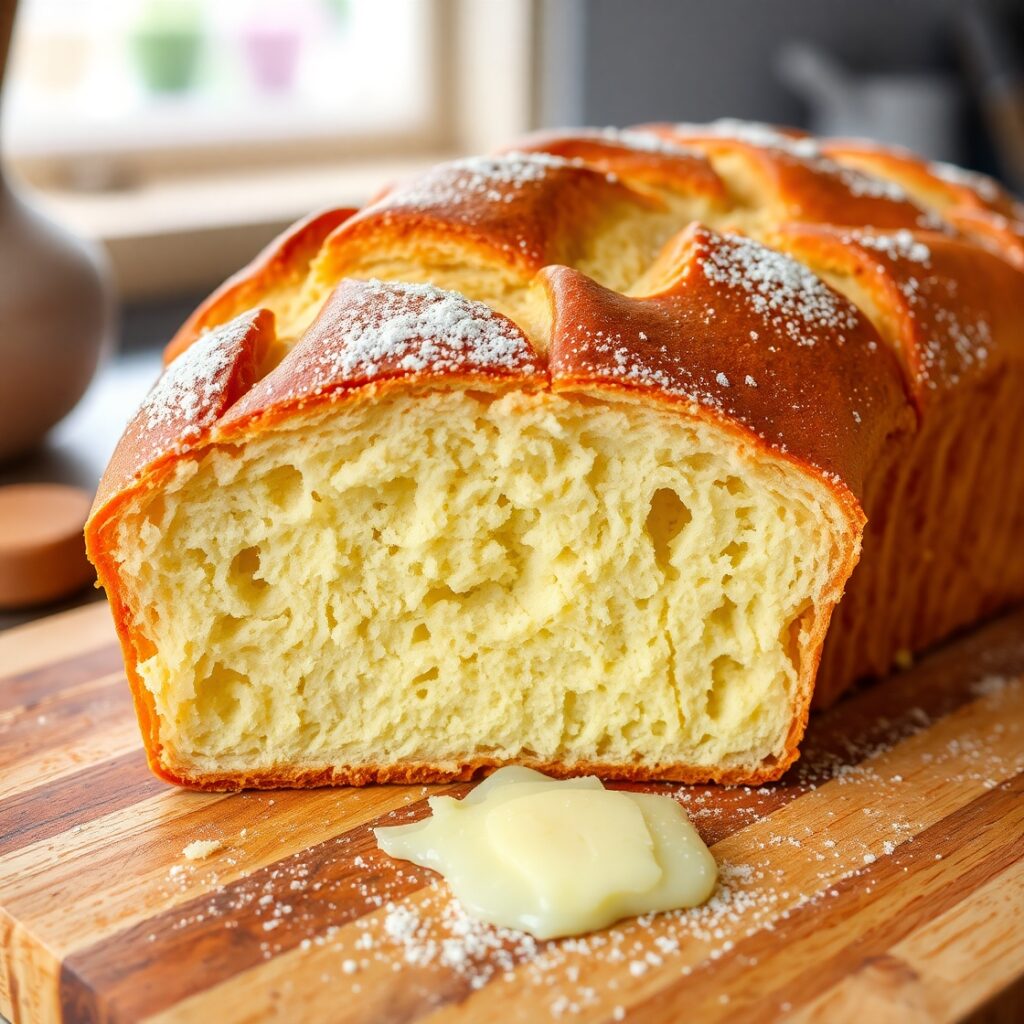
Step – 1: Activate the yeast
Begin by warming the milk to around 110°F (warm to the touch but not hot). Sprinkle the active dry yeast and a teaspoon of sugar over the milk and let it sit for about 5-10 minutes until foamy. This confirms that the yeast is active and ready to work.
Step – 2: Mix wet ingredients
In a large mixing bowl, whisk the eggs, softened butter, and vanilla extract (if using) together. Once combined, add the foamy yeast mixture.
Step – 3: Combine dry ingredients
In a separate bowl, whisk the flour, sugar, and salt to distribute them evenly.
Step – 4: Form the dough
Gradually add the dry ingredients to the wet ingredients, mixing gently with a wooden spoon or a dough hook attachment on a mixer. When the dough starts coming together, knead it on a lightly floured surface for about 8-10 minutes until smooth and elastic. If using a stand mixer, knead with the dough hook on medium speed for 5-7 minutes.
Step – 5: First rise
Place the dough in a greased bowl, cover it with a clean towel or plastic wrap, and leave it in a warm, draft-free spot to rise until doubled in size, about 1 to 1.5 hours.
Step – 6: Shape the dough
Once risen, punch down the dough gently to release air. Shape it into a loaf by folding and rolling it tightly or divide it into smaller rolls, depending on your preference. Place the shaped dough into a greased loaf pan or onto a baking tray lined with parchment paper.
Step – 7: Second rise
Cover again and let the dough rise until puffed and nearly doubled, around 45 minutes to 1 hour.
Step – 8: Bake the bread
Preheat your oven to 350°F (175°C). Bake the bread for 25-30 minutes or until the top is golden brown and the loaf sounds hollow when tapped.
Step – 9: Cool
Remove the bread from the oven and let it cool on a wire rack for at least 20 minutes before slicing. This resting time allows the crumb to set and ensures clean cuts.
Substitutions
The beauty of sweet bread is its flexibility with ingredients, allowing you to tailor it to what you have or your dietary preferences.
- Milk substitute: Use almond milk, oat milk, or soy milk for a dairy-free option. Just ensure they are warm for yeast activation.
- Butter alternative: Swap butter for coconut oil or vegan margarine if avoiding dairy.
- Flour variation: For a slightly denser but wholesome loaf, substitute half the all-purpose flour with whole wheat flour. Be mindful that this may alter the rise and texture.
- Sweeteners: Instead of granulated sugar, try honey, maple syrup, or agave syrup for natural sweetness. Adjust the liquid content slightly if using liquid sweeteners.
- Egg replacement: If you want an egg-free version, use a flax egg (1 tablespoon ground flaxseed + 3 tablespoons water) per egg. This may make the bread a bit denser but still tasty.
- Yeast: Instant yeast can replace active dry yeast without needing to proof first—just mix it directly with the dry ingredients.
Each substitution changes the bread’s character slightly, so experiment to find what you enjoy best.
Best Side Dishes of Sweet Bread Recipes
Sweet bread pairs beautifully with a range of sides that complement its subtle sweetness.
- Fresh fruit salad: The bright and juicy flavors balance the soft, buttery bread perfectly.
- Honey butter spread: Enhance the bread’s richness with a homemade honey butter for an indulgent treat.
- Savory cheese platter: Pair the bread with mild cheeses like brie or cream cheese to contrast its sweetness and add depth to your meal.
These sides enhance your sweet bread experience, whether for breakfast, afternoon tea, or a light snack.
Serving and Presentation Tips
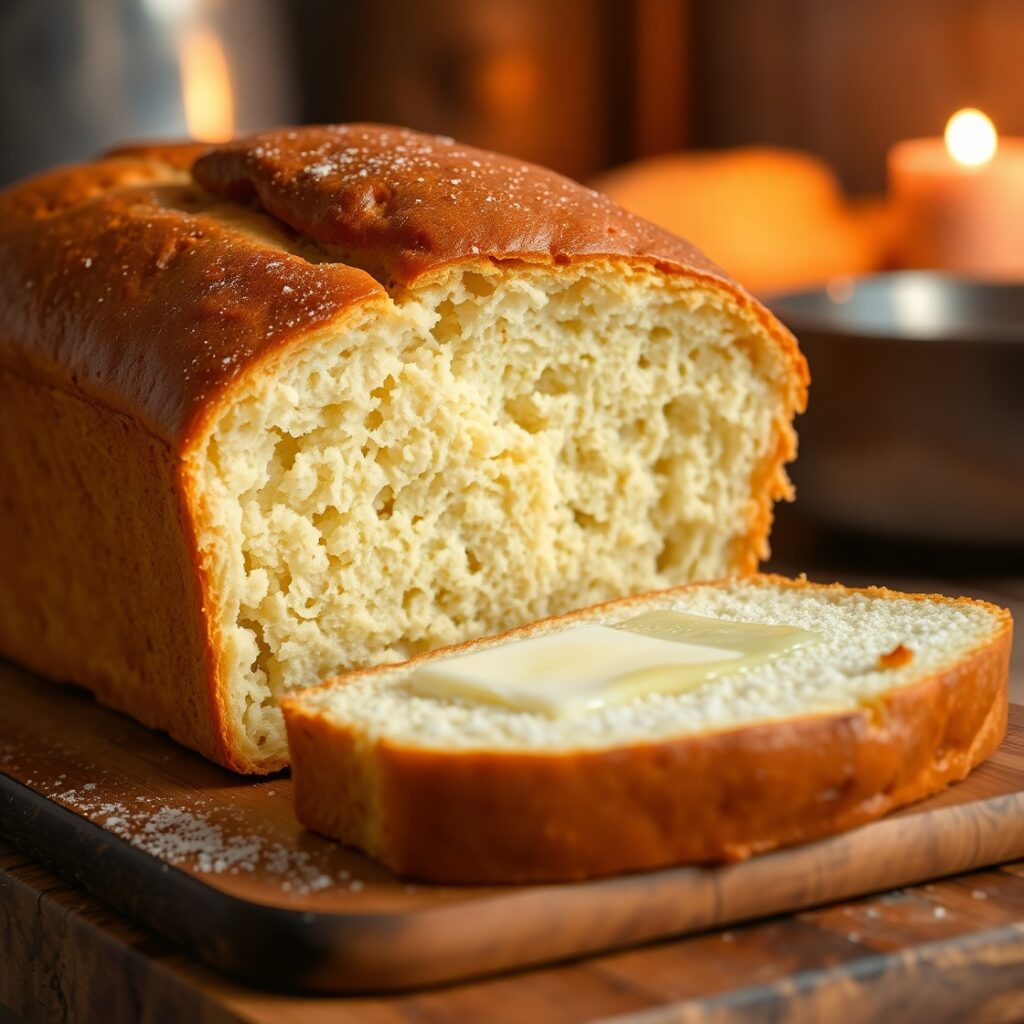
Serving sweet bread can be as simple or as elegant as you desire. For a cozy breakfast or afternoon snack, slice the bread thickly and serve it warm with a pat of butter that melts into every bite. You can lightly toast slices for added texture and aroma.
For a more polished presentation, arrange slices on a wooden board or a pretty platter. Garnish with fresh berries or edible flowers to add color and freshness. A small dish of homemade preserves or honey on the side invites guests to customize their bites.
If serving rolls, stack them in a basket lined with a linen napkin for a rustic touch. Dust the top lightly with powdered sugar or brush with a thin layer of melted butter for shine and subtle sweetness.
The key is to keep it inviting and accessible—sweet bread is meant to be enjoyed fresh and warm, with simple accompaniments that highlight its tender crumb and delicate sweetness.
Tips and Tricks to Make This Recipe Even Better
Perfecting sweet bread is about patience and attention to detail. Here are some tips to elevate your baking experience:
- Use fresh yeast: Yeast that’s past its prime won’t give a good rise. Always proof your yeast with warm milk and sugar first to ensure it’s active.
- Don’t rush the rising times: The dough needs time to develop flavor and structure. A slow, thorough rise results in a lighter, airier loaf.
- Knead well but don’t overdo it: Proper kneading develops gluten, which gives bread structure. Stop kneading when the dough is smooth and elastic.
- Keep your liquids warm, not hot: Too hot, and you kill the yeast; too cold, and it won’t activate. Aim for about 110°F (43°C).
- Experiment with flavors: Add cinnamon, nutmeg, citrus zest, or even finely chopped nuts or dried fruit to create variations without complicating the base recipe.
- Use an oven thermometer: Many home ovens are inaccurate; an oven thermometer ensures your bread bakes at the correct temperature for perfect crust and crumb.
- Brush with butter after baking: This keeps the crust soft and adds richness.
By following these tips, you’ll improve both the process and the final result of your sweet bread baking.
Common Mistakes to Avoid
Even experienced bakers encounter pitfalls. Here’s what to watch out for when making sweet bread:
- Skipping the yeast proofing step: This is crucial to ensure your yeast is alive and active; otherwise, your bread won’t rise.
- Using water that’s too hot or too cold: Incorrect temperatures can kill yeast or prevent it from activating, resulting in dense bread.
- Adding too much flour: It’s tempting to add more if the dough feels sticky, but too much flour creates a dry, tough loaf. Use just enough to keep the dough manageable.
- Not allowing enough rising time: Underproofed dough leads to dense bread lacking the light, airy texture you want.
- Overbaking: Baking too long can dry out the bread. The crust should be golden and the loaf sound hollow when tapped.
- Slicing too soon: Cutting into hot bread can cause it to crumble. Let it cool at least 20 minutes before slicing.
Avoiding these common errors will help you achieve consistent, delicious sweet bread every time.
How to Store It
Sweet bread is best enjoyed fresh, but when you have leftovers, proper storage keeps it soft and tasty longer.
- Room temperature: Wrap the bread tightly in plastic wrap or place it in an airtight container. Store at room temperature for up to 2 days.
- Refrigeration: Generally not recommended as it dries bread out faster, but if your kitchen is very warm, you can refrigerate wrapped bread for up to 4 days.
- Freezing: Sweet bread freezes beautifully. Wrap the loaf or slices tightly in plastic wrap, then foil, and freeze for up to 3 months. Thaw overnight at room temperature and warm briefly before serving.
When reheating, avoid microwaving too long as it can toughen the crumb. Instead, warm slices in a toaster oven or regular oven wrapped in foil for a few minutes.
FAQ
Q1: Can I make sweet bread without eggs?
Yes, you can substitute eggs with a flax egg or omit them entirely, though the texture will be slightly denser.
Q2: What if I don’t have active dry yeast?
Instant yeast can be used as a direct substitute but skip the proofing step and mix it directly with the flour.
Q3: Can I add fruit or nuts to the dough?
Absolutely. Adding raisins, dried cranberries, chopped nuts, or even chocolate chips enhances flavor and texture. Add them during the last few minutes of kneading.
Q4: How do I know when the bread is fully baked?
The crust should be golden brown, and the loaf should sound hollow when tapped on the bottom.
Q5: Can I use gluten-free flour?
Gluten-free baking is more complex, but with a proper gluten-free all-purpose blend and xanthan gum, it’s possible. Texture will differ from traditional bread.

Sweet Bread Recipes
- Total Time: 3 hours 30 minutes (including rising)
- Yield: 1 loaf
- Diet: Vegetarian
Description
Soft, tender, and lightly sweetened, this classic sweet bread recipe is perfect for breakfast, snacks, or anytime you crave homemade comfort. It features a pillowy crumb with just the right hint of sweetness and a buttery finish. With simple ingredients and straightforward steps, you can create a loaf that fills your home with warmth and invites everyone to gather around the table.
Ingredients
- 3 ½ cups all-purpose flour
- ½ cup granulated sugar
- 2 ¼ tsp active dry yeast (1 packet)
- 1 cup warm milk (110°F/43°C)
- ¼ cup unsalted butter, softened
- 2 large eggs
- 1 tsp salt
- 1 tsp vanilla extract (optional)
Instructions
- Warm milk and sprinkle yeast and 1 tsp sugar; let foam for 5-10 minutes.
- In a bowl, whisk eggs, butter, vanilla, and foamy yeast mixture.
- Combine flour, sugar, and salt separately. Gradually add dry to wet and mix.
- Knead dough 8-10 minutes until smooth and elastic.
- Place dough in greased bowl, cover, and rise until doubled (1-1.5 hours).
- Punch down dough, shape into loaf, place in greased pan.
- Cover and let rise 45-60 minutes until nearly doubled.
- Bake at 350°F (175°C) for 25-30 minutes until golden.
- Cool on wire rack 20 minutes before slicing.
Notes
Ensure liquids are warm but not hot to activate yeast properly.
Don’t over-flour the dough; stickiness is normal.
For a richer loaf, brush with melted butter after baking.
Add-ins like cinnamon, nuts, or dried fruit can personalize the bread.
- Prep Time: 20 minutes
- Cook Time: 30 minutes
- Category: bread
- Method: Baking
- Cuisine: American
Nutrition
- Calories: 180

